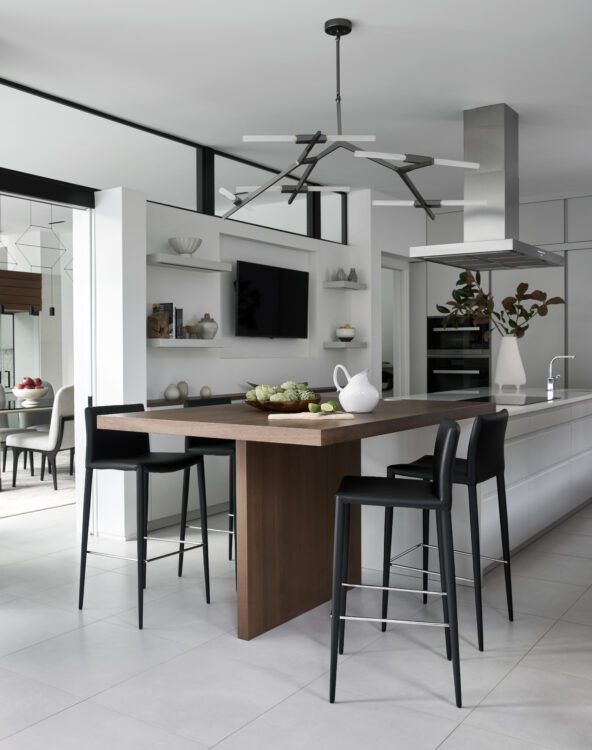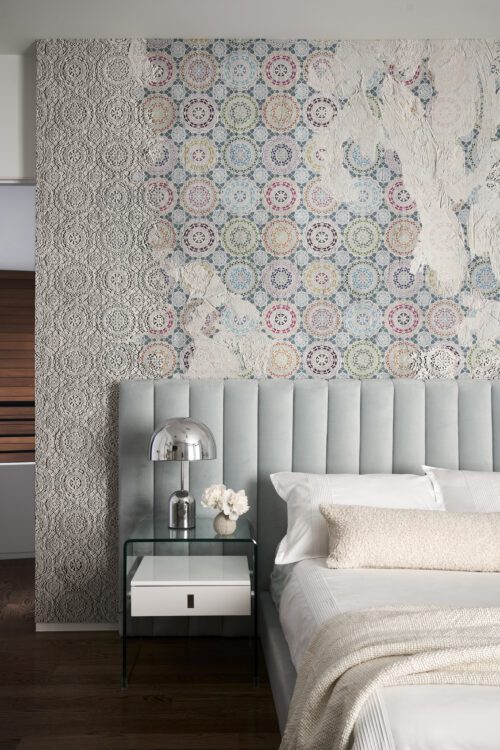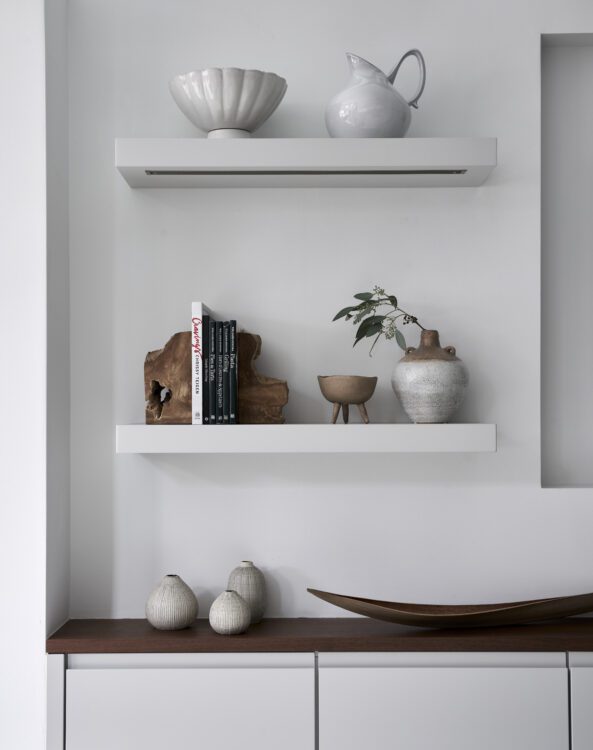I. Introduction
The process of decorating a home is an exciting and transformative journey that allows you to create a space that truly reflects your personal style and enhances your living experience. Whether you’ve just purchased a new home or want to revamp your current living space, understanding the art of home decoration is essential. This comprehensive guide will walk you through the steps and considerations involved in decorating a home, helping you achieve a harmonious and visually appealing environment.
Importance of Home Decoration:
When it comes to our homes, they are more than just four walls and a roof. Our living spaces serve as a sanctuary, a place where we can relax, recharge, and express ourselves. Home decoration plays a crucial role in creating an environment that aligns with our tastes, preferences, and lifestyle. Thoughtfully designed spaces have the power to uplift our moods, boost productivity, and promote a sense of well-being.
Setting the Stage for Personal Style:
Decorating your home offers an opportunity to infuse your personality and style into every nook and cranny. It allows you to curate a space that not only showcases your individuality but also welcomes and inspires those who step through your door. By embarking on this journey, you’ll discover the joy of transforming a house into a home that tells your unique story.
In the following sections, we will delve into the key steps required to decorate your home successfully. From establishing a vision and planning to selecting key elements and adding finishing touches, you’ll gain valuable insights and practical tips to create a space that is both aesthetically pleasing and functional. So, let’s dive in and unlock the secrets of home decoration together.
Establishing a Vision
Defining Your Style:
Before diving into the process of decorating your home, it’s important to define your personal style. Consider the aesthetic that resonates with you the most. Are you drawn to minimalistic and modern designs, or do you prefer a more eclectic and bohemian vibe? Explore various interior design styles, browse magazines, websites, and social media platforms to gather inspiration. Take note of colors, patterns, textures, and furniture styles that catch your eye. This exploration will help you establish a clear vision for your home’s overall style.
Setting Goals for Each Room:
Every room in your home serves a unique purpose, and it’s crucial to set specific goals for each space. Determine the function of each room and envision how you want to feel when you enter it. For example, a bedroom might prioritize tranquility and relaxation, while a home office may focus on productivity and organization. By defining these goals, you can make informed decisions about the layout, furniture, and decorative elements that will best suit each room’s purpose.
Considering Functionality and Lifestyle:
While aesthetics play a significant role in home decoration, it’s essential to consider functionality and lifestyle factors as well. Take into account your daily routines, the number of people living in the home, and any specific needs or preferences you have. For example, if you have young children or pets, you may want to prioritize durable and easy-to-clean materials. If you love entertaining guests, creating inviting and spacious gathering areas should be a priority. Balancing style and practicality will ensure that your home not only looks beautiful but also supports your everyday activities.
By investing time in defining your style, setting goals for each room, and considering functionality and lifestyle factors, you lay a strong foundation for your home decoration project. In the next section, we will delve into the planning and preparation phase, where you’ll learn about budgeting, research, and assessing the space.
Planning and Preparation
Creating a Budget:
Before embarking on your home decoration journey, it’s crucial to establish a realistic budget. Determine how much you’re willing to invest in the project and allocate funds for various aspects such as furniture, decor, materials, and professional services if needed. Consider setting aside a contingency fund for unexpected expenses. By having a clear budget in place, you can make informed decisions and ensure that your decorating plans align with your financial capabilities.
Conducting Research and Gathering Inspiration:
Research is a vital step in the planning phase of home decoration. Explore different sources of inspiration, including interior design magazines, online platforms, social media, and even visiting showrooms or model homes. Take note of design elements, color schemes, and layouts that resonate with your vision. Create mood boards or save digital inspirations to help you visualize the overall look and feel you want to achieve in your home.
Measuring and Assessing the Space:
Before making any design decisions, it’s essential to measure and assess the space you’ll be decorating. Take accurate measurements of each room, including dimensions of walls, windows, and doorways. Consider the architectural features, such as ceiling height, existing built-ins, or any structural constraints. This information will guide you in selecting appropriately sized furniture and determining the layout that optimizes the available space.
Developing a Timeline:
Home decoration projects require careful planning and organization. Develop a timeline that outlines the key milestones and deadlines for your project. Consider factors such as the availability of contractors, delivery times for furniture or materials, and any events or occasions that may impact your progress. Breaking down the project into smaller tasks and assigning timeframes will help you stay on track and ensure a smooth and efficient execution.
By creating a budget, conducting thorough research, measuring and assessing the space, and developing a timeline, you lay the groundwork for a well-planned home decoration project. In the next section, we will explore the process of selecting key elements, such as color schemes, furniture, lighting, and more.
Selecting Key Elements
Choosing Color Schemes:
Color plays a crucial role in setting the mood and creating the desired atmosphere in your home. Consider the overall aesthetic you want to achieve and select a color scheme that complements your style and preferences. Explore different color palettes, including monochromatic, complementary, or analogous schemes. Take into account the natural lighting in each room and how colors will interact with it. Remember, colors can evoke emotions, so choose hues that align with the desired ambiance of each space.
Furniture Selection and Placement:
Furniture selection is an important aspect of home decoration as it defines the functionality, comfort, and style of your living spaces. Consider the size and layout of each room and choose furniture pieces that fit proportionally. Opt for quality and durable materials that align with your lifestyle. Consider the placement of furniture to create a cohesive and functional layout, allowing for ease of movement and a visually pleasing arrangement.

Flooring and Wall Treatments:
Flooring and wall treatments contribute significantly to the overall aesthetic of your home. Consider options such as hardwood, tiles, carpeting, or laminate flooring, keeping in mind durability, maintenance, and the desired look. Explore different wall treatments, including paint, wallpaper, or textured finishes, to add depth and visual interest. Ensure that your choices for flooring and wall treatments complement the overall style and color scheme of each room.
Lighting and Ambiance:
Lighting sets the mood and enhances the functionality of your home. Consider a layered lighting approach that incorporates ambient, task, and accent lighting. Select fixtures that align with your style while providing sufficient illumination. Explore options such as chandeliers, pendant lights, recessed lighting, or wall sconces. Consider integrating dimmers and smart lighting systems to create versatile lighting scenarios and enhance ambiance.
Window Treatments and Fabrics:
Window treatments and fabrics add texture, privacy, and a touch of elegance to your home. Choose curtains, blinds, or shades that align with the style of each room while offering light control and privacy. Explore various fabric options for upholstery, cushions, and drapery, considering durability and maintenance requirements. Patterns, textures, and colors in fabrics can add depth and visual interest to your overall design scheme.
Accent Pieces and Decorative Accessories:
Accent pieces and decorative accessories are the finishing touches that bring personality and visual interest to your home. Choose statement pieces such as artwork, sculptures, or unique decorative objects that reflect your taste. Incorporate textiles, such as rugs, throws, and pillows, to add warmth and texture. Consider the placement and arrangement of these items to create focal points and enhance the overall aesthetic appeal.
By carefully selecting key elements such as color schemes, furniture, flooring and wall treatments, lighting, window treatments and fabrics, as well as accent pieces and decorative accessories, you can bring your vision to life. In the next section, we will guide you through the implementation of your design, including furniture arrangement, paint application, and installation of various elements.
Implementing the Design
Furniture Arrangement and Layout:
With your selected furniture pieces in hand, it’s time to arrange them in a way that optimizes the functionality and flow of each room. Consider the focal point of the space and arrange furniture around it. Create conversational areas by grouping seating together. Ensure there is enough space for easy movement and traffic flow. Experiment with different layouts until you find the arrangement that best suits your vision and the room’s purpose.
Paint and Wallpaper Application:
Applying paint or wallpaper is a transformative step in bringing your design to life. Prepare the surfaces by cleaning and priming them, ensuring a smooth and even finish. Choose high-quality paints or wallpapers that align with your desired color scheme and style. Consider accent walls or unique patterns to add visual interest. Follow proper application techniques and allow sufficient drying time between coats for a flawless and long-lasting result.


Installation of Flooring and Lighting Fixtures:
If you’ve chosen new flooring materials or lighting fixtures, it’s time to proceed with their installation. Hire professionals if necessary, ensuring proper measurements and installation techniques. Lay flooring according to manufacturer instructions, considering transitions between different materials. Install lighting fixtures, adhering to safety guidelines and consulting an electrician if needed. Take care to ensure a seamless integration of these elements into your overall design.
Window Treatment Installation:
Install the chosen window treatments to enhance privacy, light control, and aesthetic appeal. Follow the instructions provided by the manufacturer or consult professional installers if necessary. Ensure proper measurements and level installation for a polished look. Test functionality and adjust as needed to ensure smooth operation and alignment with your design vision.
Decorating with Artwork and Accessories:
Now is the time to bring out your carefully selected artwork and decorative accessories. Hang artwork at appropriate eye-level heights, considering scale and proportion. Place decorative objects strategically to create visual interest and focal points. Layer textiles such as rugs, throws, and pillows to add texture and warmth. Step back, assess the overall composition, and make adjustments as necessary to achieve a harmonious and visually pleasing arrangement.
By implementing your design through furniture arrangement, paint or wallpaper application, installation of flooring and lighting fixtures, window treatments, and the incorporation of artwork and accessories, you’ll witness your vision coming to life. In the final section, we will explore the importance of adding those finishing touches that truly personalize and elevate your home decor.
Adding Finishing Touches
Styling and Arranging Decorative Items:
The finishing touches of your home decoration project involve styling and arranging decorative items to create a cohesive and visually appealing look. Pay attention to balance and symmetry when placing objects. Create vignettes by grouping items of varying heights, shapes, and textures. Use trays or decorative bowls to corral smaller items and create a sense of organization. Experiment with different arrangements until you achieve a visually pleasing composition.


Incorporating Plants and Greenery:
Plants and greenery add life, freshness, and a touch of nature to your home. Select plants that thrive in the lighting conditions of each room and consider their care requirements. Place potted plants on tables, shelves, or hanging planters to add visual interest at different heights. Incorporate larger plants as statement pieces in corners or empty spaces. The addition of greenery will bring vibrancy and a sense of tranquility to your home.
Enhancing with Textiles and Soft Furnishings:
Textiles and soft furnishings are essential for adding comfort, warmth, and texture to your spaces. Layer rugs to define seating areas or add coziness to bare floors. Select curtains or drapes that complement the style of each room while providing privacy and light control. Arrange plush cushions and throws on sofas, chairs, or beds to create inviting and comfortable seating areas. Pay attention to color coordination and patterns to ensure a harmonious look.
Personalizing the Space:
Personalization is key to making your house feel like a home. Display personal mementos, family photographs, or artwork that holds sentimental value. Incorporate items that reflect your hobbies, interests, or travels, adding a unique touch to your decor. Showcase collections or cherished objects that tell your story. By infusing your personality and memories into the design, you create a space that truly feels like it belongs to you.
Finalizing Details and Ensuring Cohesion:
Take a step back and assess the overall design to ensure cohesion and harmony. Pay attention to small details such as coordinating hardware finishes, matching switch plates, or selecting cohesive accessories. Make any necessary adjustments to achieve a unified look across all rooms. Consider how each space flows into the next and create visual connections through color, patterns, or complementary design elements. Finalize any remaining tasks and details to bring your home decoration project to a satisfying conclusion.
By adding these finishing touches, you breathe life and personality into your home decor. Styling and arranging decorative items, incorporating plants and greenery, enhancing with textiles and soft furnishings, personalizing the space, and finalizing details ensure that your home truly reflects your style and creates a warm and inviting atmosphere. With the completion of these steps, your home decoration journey reaches a fulfilling conclusion.
In conclusion, by following the steps outlined in this guide, you’ve learned how to decorate a home with expertise, experience, authoritativeness, and trustworthiness. Remember that home decoration is a creative and personal process, and it’s essential to enjoy the journey as you transform your house into a beautifully styled home that perfectly represents you.
